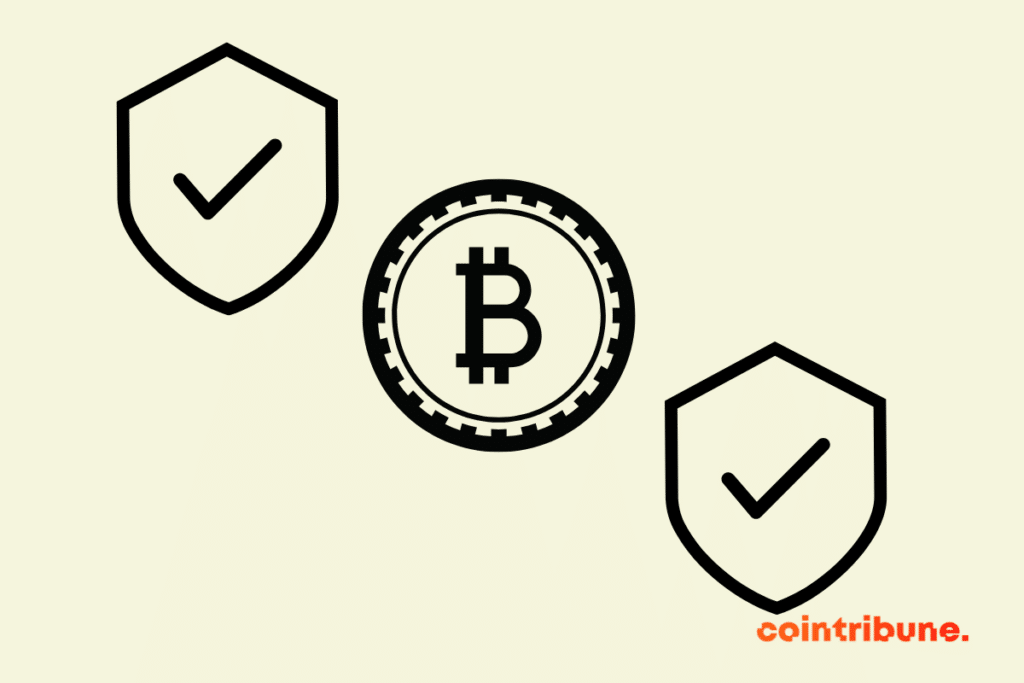Bitcoin (BTC): Your Guide to Multisig Security
As a cryptocurrency investor, protecting and securing your digital assets is an ongoing mission. It is crucial to incorporate various Bitcoin security strategies into your arsenal. A key tactic among these is multisig security, a system that relies on the use of multisignature wallets, also known as “multisig wallets”. This approach, which requires multiple validations to make your bitcoin expenditures, provides undeniable protection against hacking attacks. Therefore, the importance of mastering multisig security cannot be underestimated. Let’s delve into this essential concept.

What are the weaknesses of single-signature crypto wallets?
Although single-signature wallets are easy to use and popular, they have certain vulnerabilities that must be understood to grasp the concept of multisig.
Security
Single-signature wallets are vulnerable to malware attacks and keyloggers. If your device is compromised, hackers can access your wallet and steal your funds. Therefore, it is crucial to maintain a good level of security by using up-to-date antivirus software, avoiding suspicious websites and applications, and taking additional security measures, such as using two-factor authentication.
Loss of key
If you lose the private key associated with your single-signature wallet, you will also permanently lose access to your funds. Unlike multisignature wallets that allow for key recovery in case of loss, single-signature wallets generally do not have recovery mechanisms. Thus, it is essential to back up your private key in a secure location and plan for additional backup measures, such as backup wallets or multisig security.
Risk of fraud
Single-signature wallets are often targets for phishing and all sorts of scams. Hackers may try to deceive you into disclosing your private key or other sensitive information. It is essential to be vigilant and never share your confidential information with untrustworthy third parties.
Lack of control
Single-signature wallets do not generally provide you with full control over your transactions. You must trust the wallet service provider to process transactions correctly and securely. In case of failure or mismanagement by the provider, you could suffer financial losses.
Key management
Single-signature wallets are not recommended for key management in businesses or organizations that require more complex validation and authorization processes. Multisignature wallets are better suited for these cases, as they allow multiple stakeholders to participate in approving transactions.
These weaknesses do not mean that single-signature wallets are not secure or practical. They have their advantages, particularly their ease of use for individual users. You should be aware of their limitations and take additional security measures to protect your digital assets.

Understanding the multisig concept
The multisig concept, or multisignatures, is a security mechanism that enhances transaction and wallet protection for cryptocurrencies such as Bitcoin.
Definition and operation
The multisig is a system that requires multiple signatures to authorize a transaction. It operates based on bitcoin addresses created from multiple private keys. For a transaction to be validated, a certain number of these private keys must be used to sign the transaction. Thus, multisig increases security by making it more difficult to steal funds.
The different types of multisig
There are several types of multisig, of which the two main ones are:
M-of-N multisig
The M-of-N multisig is a system where M signatures are required among N possible private keys. For example, a 2-of-3 multisig wallet requires two signatures among three private keys to authorize a transaction.
In the case of M-of-N multisig, multiple participants must sign a transaction for funds to be spent. This allows for collective fund management and reduces the risk of key loss. However, it also increases complexity and the costs of key management, requiring the trust of the participants.
Time-lock multisig
The time-lock multisig is a mechanism that adds a time constraint to transactions. It allows blocking funds until a specific date or a certain number of blocks before the transactions can be authorized.
This offers an additional level of security in case of key theft or system compromise. It also allows the creation of customized unlocking scenarios. However, it restricts immediate access to funds and may require additional transaction fees to set up and execute the time lock.
Here is a summary table of the advantages and disadvantages, features, and similarities of the two main multisigs.
| M-of-N Multisig | Time-lock Multisig | |
| Features | Requires M signatures from N participants | Requires a predefined duration before spending |
| Advantage 1 | – Allows collective fund management | – Provides an additional level of security |
| Advantage 2 | – Reduces the risk of key loss | – Allows the creation of customized unlocking scenarios |
| Advantage 3 | – Offers better protection against | |
| Disadvantage 1 | – Increases complexity and costs of key management | – Restricts immediate access to funds |
| Disadvantage 2 | – Requires trust among participants | – May incur additional transaction fees |
The features, advantages, and disadvantages may vary depending on the specific implementation of each multisig system. Therefore, it is recommended to consult the specific specifications and protocols for a thorough understanding of each multisig method.
Advantages of multisig security
Multisig security offers several benefits in terms of protecting digital assets.
Enhancing security
Multisig makes it more difficult to access funds in case of compromise of a single private key. Multiple keys are needed to complete a transaction, complicating attempts at theft or fraud.
Protection against human errors
By requiring multiple signatures, multisig limits the risks of human errors, such as losing a recovery phrase or compromising a private key.
Flexible access control
Multisig allows for flexible and customizable access control. For example, in a company, it can be used to require approval from multiple members before making significant transactions.
How to set up a multisig address?
To create and use a multisig address, you must follow these steps:
Creating private keys
Start by generating multiple private keys for each participant. Each participant should securely store their key, for instance, on a hardware wallet like the Ledger Nano.
Configuring the multisig address
Configure the multisig address using compatible software, such as Bitcoin Core or Electrum. Specify the number of required signatures and the public keys associated with the previously generated private keys. The software will then generate a new multisig address.
Validating multisig transactions
Finally, to validate a transaction, participants must use their private keys to sign the transaction. Once the required number of signatures is reached, the transaction will be validated and broadcast to the Bitcoin network.
Examples of Using Multisig Security
Multisig can be used in various situations to enhance security and control over transactions:
Applications in Businesses
Businesses can use multisig to ensure that multiple members of management approve significant transactions, thereby reducing the risks of abuse or fraud.
Management of Common Funds
In the context of managing common funds, multisig can be used to require approval from multiple parties before releasing funds. This can be particularly useful for collaborative projects or pooled investments.
Protection of Investments
Investors can use multisig to protect their assets from theft or loss by requiring multiple signatures for transactions. This limits the risks associated with the compromise of a single private key or human error.
Conclusion
Multisig security represents an essential protection mechanism for Bitcoin users and other cryptocurrencies. It not only strengthens the security of transactions and wallets but also minimizes the risks of human errors and provides flexible access control. In addition to multisig security, two-factor authentication for Bitcoin is another effective way to protect your transactions and assets. Additionally, using a Bitcoin VPN can provide an extra layer of security by masking your online activity and preserving your privacy. To set up a multisig address, it is necessary to generate multiple private keys, configure the multisig address with compatible software, and sign transactions with the required private keys. Thus, by adopting these security measures, you can navigate the world of cryptocurrencies with peace of mind.
Maximize your Cointribune experience with our "Read to Earn" program! For every article you read, earn points and access exclusive rewards. Sign up now and start earning benefits.
The Cointribune editorial team unites its voices to address topics related to cryptocurrencies, investment, the metaverse, and NFTs, while striving to answer your questions as best as possible.
The views, thoughts, and opinions expressed in this article belong solely to the author, and should not be taken as investment advice. Do your own research before taking any investment decisions.